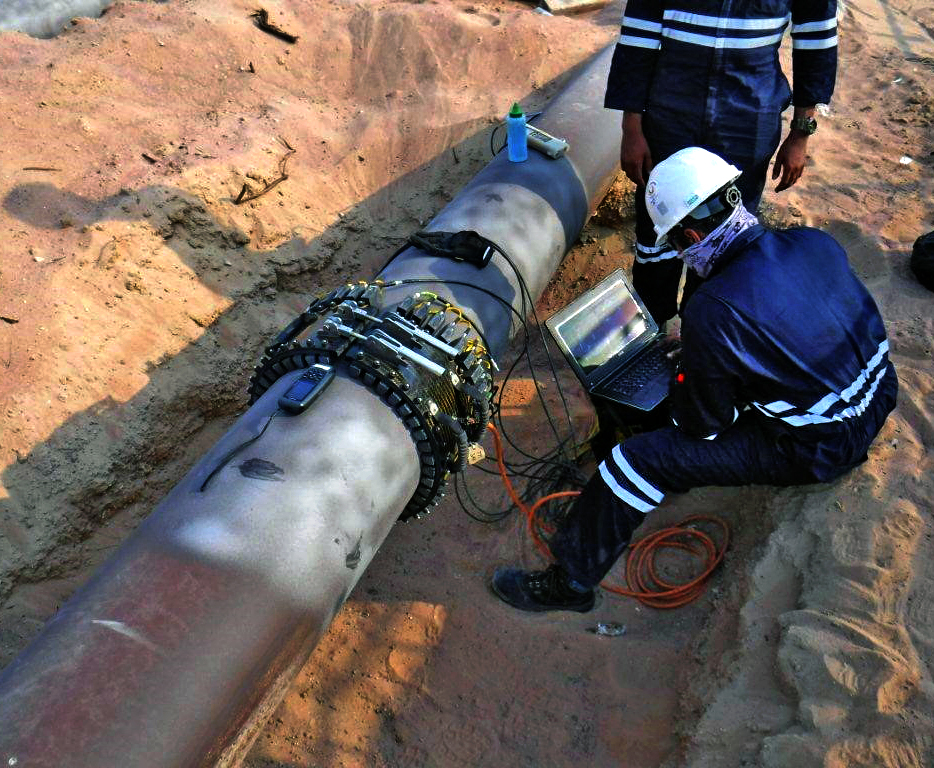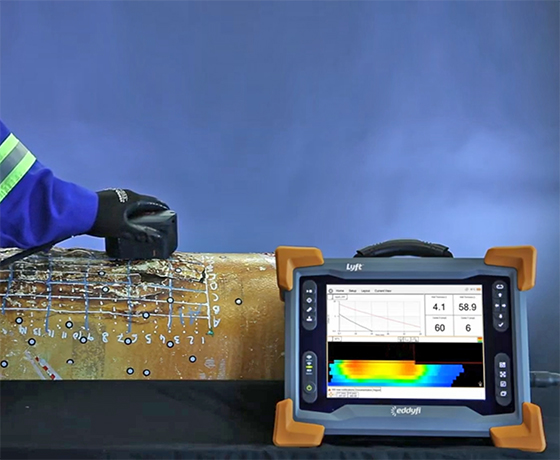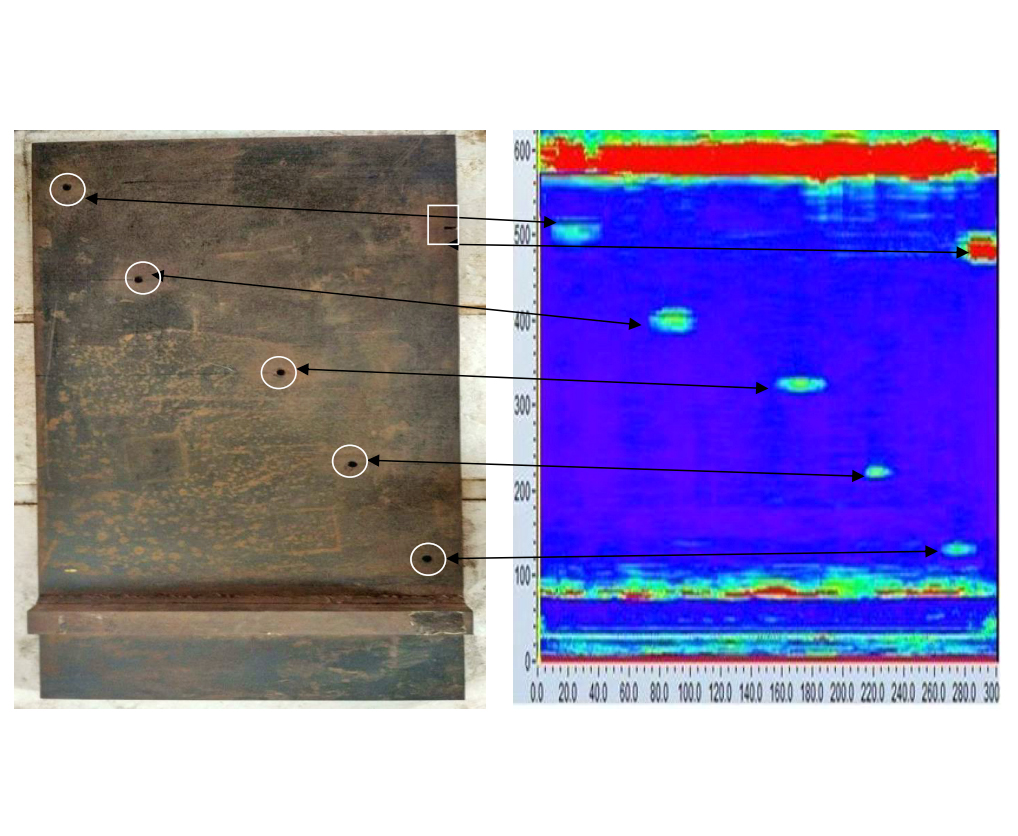
There are certain sections of the pipelines like portions crossing under the road crossing/culverts, underground portion, where online inspection using conventional ultrasonic thickness gauging is not possible. To assess the integrity of these sections, advanced NDT, LRUT (Long Range Ultrasonic Testing) is performed as a screening tool utilizing ultrasonic guided waves.
The operation consists of application of low frequency ultrasonic waves to the Pipes in order to detect material loss and other defects (internal and external) due to corrosion, erosion, mechanical damage or any other degradation process. Basically, three forms of wave modes namely, longitudinal, torsional and flexural travel along the pipe.
Typical testing ranges of + 30m and under ideal conditions upto +150m achievable. The technique is equally sensitive to metal loss on both outside and inside surfaces of pipe. Guided wave tools are available for pipe in pipes with diameters ranging from 3” onwards. .

PEC can be used to detect CUI and corrosion under fireproofing (CUF) in a wide variety of assets, including in Petrochemical Plants & Refineries, Sphere Legs, Pressure Vessels, power industry, Marine, Offshore Platform Legs, etc. The inspection is performed in-service without removing the insulation including the reinforcement mesh. In pulsed eddy current inspection, an electric current is introduced in a probe’s transmitter coil, which magnetizes the steel beneath the probe. The current is then switched off and, as a result, the steel demagnetizes. This generates eddy currents in the steel, which diffuse inwards from the steel surface and decay in strength as they propagate, which is detected by a set of receiver coils in the PEC probe. Typical testing ranges upto 100mm carbon steel with upto 250mm insulation

The sound waves generated at approx 70-75 deg, floods the thin wall material and then reflect back at interfaces such as corrosion/pitting. With our automated scanners the whole scan can be encoded and permanent record can be documented for future monitoring purposes. Typical testing ranges upto 13mm wall thickness and penetration upto 1400mm is possible.